For this preamp I need a schematic diagram. Where I can ask therefore ?
The use of extremely cheap and extremely expensive parts is completely incomprehensible - at least for me.
The follow examples I note:
1) very cheap ribbon cable between the rotary switches and the input RCA socket PCB and expensive interconnect coax cable between the input socket PCB and line board so as line board and output socket PCB (hard to solder on PCB due extremely flexible inner conductor and extremely rigid outer insulation)
2) very cheap LORLIN rotary switches for TP/source and input selector and expensive NOBLE volume control attenuator
3) low cost electrolytics for power supply and very expensive caps in the signal pad (Audio Note, Jensen, ANGELA) and as bypass cap on the cathode (black gate)
4) Nylon stud (plastic fastenings, threaded nylon PCB spacer/standoffs) instead brass and stainless versions
5) PCB without copper traces
From my view a completely mental accident (or is there a specific intention behind it to get a certainly sonic character ? - I don't know).
Check out the attached images.
The use of extremely cheap and extremely expensive parts is completely incomprehensible - at least for me.
The follow examples I note:
1) very cheap ribbon cable between the rotary switches and the input RCA socket PCB and expensive interconnect coax cable between the input socket PCB and line board so as line board and output socket PCB (hard to solder on PCB due extremely flexible inner conductor and extremely rigid outer insulation)
2) very cheap LORLIN rotary switches for TP/source and input selector and expensive NOBLE volume control attenuator
3) low cost electrolytics for power supply and very expensive caps in the signal pad (Audio Note, Jensen, ANGELA) and as bypass cap on the cathode (black gate)
4) Nylon stud (plastic fastenings, threaded nylon PCB spacer/standoffs) instead brass and stainless versions
5) PCB without copper traces
From my view a completely mental accident (or is there a specific intention behind it to get a certainly sonic character ? - I don't know).
Check out the attached images.
Attachments
-
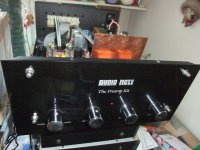 Audio Note Preamp Kit front.JPG605.3 KB · Views: 1,258
Audio Note Preamp Kit front.JPG605.3 KB · Views: 1,258 -
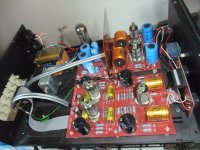 Audio Note Preamp Kit Top view-I.JPG678.6 KB · Views: 1,608
Audio Note Preamp Kit Top view-I.JPG678.6 KB · Views: 1,608 -
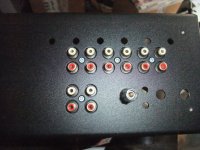 Audio Note Preamp Kit rear-I.JPG813.6 KB · Views: 993
Audio Note Preamp Kit rear-I.JPG813.6 KB · Views: 993 -
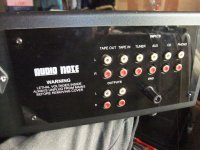 Audio Note Preamp Kit rear-II.JPG712.3 KB · Views: 938
Audio Note Preamp Kit rear-II.JPG712.3 KB · Views: 938 -
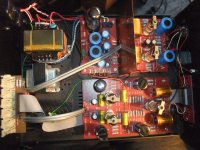 Audio Note Preamp Kit Top view-II.JPG714.3 KB · Views: 1,367
Audio Note Preamp Kit Top view-II.JPG714.3 KB · Views: 1,367 -
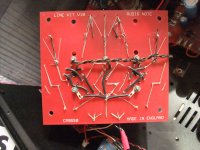 Audio Note Preamp Kit V10 CM9550 Solder Site.JPG630.8 KB · Views: 1,610
Audio Note Preamp Kit V10 CM9550 Solder Site.JPG630.8 KB · Views: 1,610 -
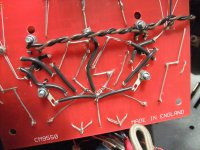 Audio Note Preamp Kit V10 CM9550 Solder Site-II.JPG617.1 KB · Views: 1,062
Audio Note Preamp Kit V10 CM9550 Solder Site-II.JPG617.1 KB · Views: 1,062 -
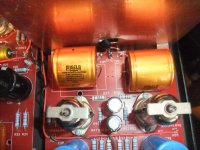 Audio Note Preamp Kit CM308 output PCB interrupted wires-V.JPG646.3 KB · Views: 1,575
Audio Note Preamp Kit CM308 output PCB interrupted wires-V.JPG646.3 KB · Views: 1,575 -
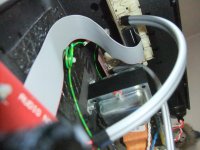 Audio Note Preamp Kit CM308 inp+outp PCB interrupted wires.JPG590.1 KB · Views: 863
Audio Note Preamp Kit CM308 inp+outp PCB interrupted wires.JPG590.1 KB · Views: 863 -
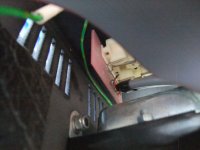 Audio Note Preamp Kit CM308 output PCB interrupted wires-X.JPG611.1 KB · Views: 803
Audio Note Preamp Kit CM308 output PCB interrupted wires-X.JPG611.1 KB · Views: 803 -
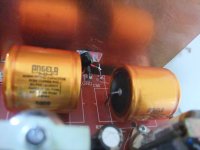 Audio Note Preamp Kit CM308 output PCB interrupted wires-IX.JPG493.6 KB · Views: 816
Audio Note Preamp Kit CM308 output PCB interrupted wires-IX.JPG493.6 KB · Views: 816 -
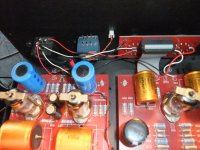 Audio Note Preamp Kit Vol-Contr interrupted wires-V.JPG623.5 KB · Views: 859
Audio Note Preamp Kit Vol-Contr interrupted wires-V.JPG623.5 KB · Views: 859 -
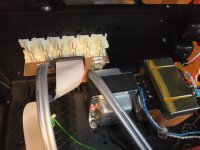 Audio Note Preamp Kit CM308 input PCB interrupted wiresIV.JPG637 KB · Views: 801
Audio Note Preamp Kit CM308 input PCB interrupted wiresIV.JPG637 KB · Views: 801 -
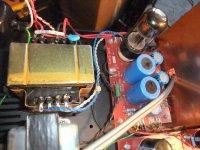 Audio Note Preamp Kit Power Supply.JPG667.5 KB · Views: 799
Audio Note Preamp Kit Power Supply.JPG667.5 KB · Views: 799 -
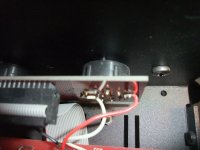 Audio Note Preamp Kit input selector LORLIN-II.JPG532.4 KB · Views: 688
Audio Note Preamp Kit input selector LORLIN-II.JPG532.4 KB · Views: 688 -
 Audio Note Preamp Kit input selector LORLIN-I.JPG388.7 KB · Views: 661
Audio Note Preamp Kit input selector LORLIN-I.JPG388.7 KB · Views: 661 -
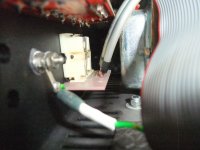 Audio Note Preamp Kit CM308 output PCB interrupted wires-IV.JPG581.6 KB · Views: 649
Audio Note Preamp Kit CM308 output PCB interrupted wires-IV.JPG581.6 KB · Views: 649 -
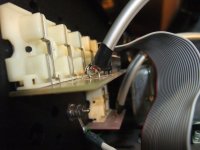 Audio Note Preamp Kit CM308 input PCB interrupted wires-II.JPG427.8 KB · Views: 639
Audio Note Preamp Kit CM308 input PCB interrupted wires-II.JPG427.8 KB · Views: 639 -
 Audio Note Preamp Kit PCB Spacer.JPG588.3 KB · Views: 651
Audio Note Preamp Kit PCB Spacer.JPG588.3 KB · Views: 651 -
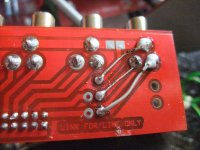 Audio Note Preamp Kit CM308 input PCB interrupted wires.JPG607.5 KB · Views: 932
Audio Note Preamp Kit CM308 input PCB interrupted wires.JPG607.5 KB · Views: 932
more images
Attachments
-
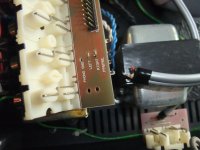 Audio Note Preamp Kit CM308 input PCB interrupted wires-III.JPG410.5 KB · Views: 216
Audio Note Preamp Kit CM308 input PCB interrupted wires-III.JPG410.5 KB · Views: 216 -
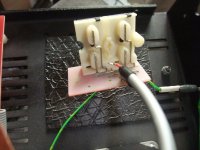 Audio Note Preamp Kit CM308 output PCB interrupted wires-III.JPG496.5 KB · Views: 223
Audio Note Preamp Kit CM308 output PCB interrupted wires-III.JPG496.5 KB · Views: 223 -
 Audio Note Preamp Kit CM308 output PCB interrupted wires-II.JPG304.4 KB · Views: 267
Audio Note Preamp Kit CM308 output PCB interrupted wires-II.JPG304.4 KB · Views: 267 -
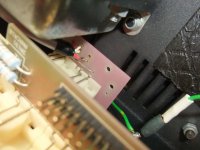 Audio Note Preamp Kit CM308 output PCB interrupted wires.JPG432.5 KB · Views: 278
Audio Note Preamp Kit CM308 output PCB interrupted wires.JPG432.5 KB · Views: 278 -
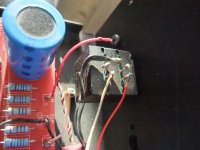 Audio Note Preamp Kit Vol-Contr interrupted wires-III.JPG647.9 KB · Views: 327
Audio Note Preamp Kit Vol-Contr interrupted wires-III.JPG647.9 KB · Views: 327 -
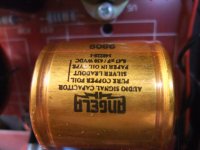 Audio Note Preamp Kit V10 CM9550 output cap.JPG427.4 KB · Views: 265
Audio Note Preamp Kit V10 CM9550 output cap.JPG427.4 KB · Views: 265 -
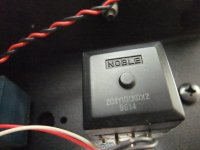 Audio Note Preamp Kit Vol.Contr.NOBLE.JPG598.7 KB · Views: 276
Audio Note Preamp Kit Vol.Contr.NOBLE.JPG598.7 KB · Views: 276 -
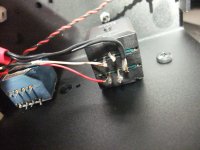 Audio Note Preamp Kit Vol-Contr interrupted wires-I.JPG586.5 KB · Views: 226
Audio Note Preamp Kit Vol-Contr interrupted wires-I.JPG586.5 KB · Views: 226 -
 Audio Note Preamp Kit Vol-Contr interrupted wires-II.JPG503.3 KB · Views: 233
Audio Note Preamp Kit Vol-Contr interrupted wires-II.JPG503.3 KB · Views: 233
This URL seems to be the right supplier for circuit diagrams, but I don't find it here
https://www.mostlyaudio.com/DAC21_AnalogBoardBuild.htmlfound under
https://www.mostlyaudio.com
https://www.mostlyaudio.com/DAC21_AnalogBoardBuild.htmlfound under
https://www.mostlyaudio.com
Choice could have been because of an real engineer selecting for results and meeting a price point, not some audio magazine reviewer ( or non-engineer owner) looking at the board who is in love with snake oil. Being a kit, maybe a hobbyist who was just as well informed in engineering, Or could have been a hobbyist who had no clue. Maybe just what someone had in their parts bin when they built it. You gave no history on it.
Nothing wrong with point to point wiring if you are making one. Why do you think nylon standoffs are not as good as brass or stainless? I would pick nylon every time. Expensive volume controls tend to have better tracking and sometimes lower noise. Good choice probably. Power supply caps "quality" is not some "audiophool" brand name. They do not have subtle sonic added distortion of caps in the signal path. More important is appropriate size and life span. Even ESR is over-rated if the value was selected correctly. On and on.
A "sonic character" is a code word for DISTORTION. Good or bad is a subjective choice. Why are you looking at it? What is it you think you hear you would like to change? Does it in fact have a "sonic character?
Nothing wrong with point to point wiring if you are making one. Why do you think nylon standoffs are not as good as brass or stainless? I would pick nylon every time. Expensive volume controls tend to have better tracking and sometimes lower noise. Good choice probably. Power supply caps "quality" is not some "audiophool" brand name. They do not have subtle sonic added distortion of caps in the signal path. More important is appropriate size and life span. Even ESR is over-rated if the value was selected correctly. On and on.
A "sonic character" is a code word for DISTORTION. Good or bad is a subjective choice. Why are you looking at it? What is it you think you hear you would like to change? Does it in fact have a "sonic character?
Audio equipment voicing is as much an art as it with musical instrument makers! Ask any Luthier or pipe organ builder. ;-)
Completely valid IF the equipment is part of the instrument. Mic, mic preamp, guitar amp etc. If your intention is reproduction, then no.Audio equipment voicing is as much an art as it with musical instrument makers! Ask any Luthier or pipe organ builder. ;-)
A luthier or pipe tuner is crafting for the original sound. Not reproduction. Invalid analogy.
Even "sonic signature" is not an art to a real engineer. For example, I can exchange second for third harmonic distortion in an otherwise identical amp just by changing the relationship between IPS LTP degeneration and global feedback. I can change the "transparency" that is somewhat dependent on the speakers by using dominant pole vs Miller compensation. I can make one sound darker or brighter and both measure below what the so-called experts can claim is audible. Factors like if the noise floor is frequency or level dependent. Things like interaction from high order ( above hearing) harmonics causing IM. Things like rail collapse due to insufficient supply bank. I can do these things and I am far from the expertise of experienced professional engineers. Or some of the newer super clean amps that sound a bit lifeless only because of a lack of the coloration we are used to from higher distortion equipment. ( and some just sound like harsh crap) We can retrain out expectations. Lots of live acoustic music really helps. Then the "clean" equipment will usually sound better to you.
As another direct example, I identified a symptom, and I think I know the cause but can't measure due to cost, why some DACs had a objectionable "glare" on some music on some speakers, and others do not. Yet the DACS all measure incredibly. Different speaker, no difference. I can make it come and go by swapping the DAC, but I don't know enough about DAC design to modify one circuit to behave either way. ( I like my JDS Atom DAC+ even after I changed the tweeters that were sensitive to the issue)
Tell an engineer what transfer function you want, and they will build it if it does not violate the laws of physics.
Here is the hard part: What is it that makes our totally undefined wild card, our brain, believe we like what we hear. It is science, but not yet applied engineering. It seems to differ with culture, race and experience. So, everyone may have a real preference, everyone may have a subjective bias preference. The only ones I can declare completely wrong are the ones selling "audiophile power cables". There is a difference between ill-defined yet to measure portions of the transfer function and things that are not possible within the laws of physics.
FWIW, price of the equipment does not track very well with sonic quality. Circuit design ( including physical implementation) if far more important than if you think a part is expensive or cheap. There are places where a carbon comp resistor is the correct part, others a metal film. How a part is used, like how much bias is on an electrolytic cap, matters more than the brand name as advertised in slick page ads. My experience suggests to me we do not yet have enough understanding of measurements or interpretation of them to be total number chasers. ( i.e. ASR forums). Getting better, but more to learn. When we learn, we can then design. One amplifier may measure .0003% THD+N, another .01. Which sounds better? I can't tell you from those measurements and you may disagree with the next person. But a competent engineer can build to either. Engineering, not art.
Coming from the pro-audio world, I can assure you that ANY different circuit and layout has a different sound on its own. We know that and use it accordingly, to alter the sound in the way we want. And, tubes are also used for their sound, not because they are particularly linear.
But I obviously agree with tvrgeek about the subjectivity of perception.
When you take a glimpse into - say - a UREI compressor, which is probably a sound-significant part of virtually most of the recordings in pop, rock, folk, etc. since decades, you will be astonished that it will use almost no "audiophile" parts, except of the in- and output transformers, and even very cheap electrolytic capacitors are frequent in the signal path.
No long ago I restored a special version of a Trident 80 mixing desk (62 channels, 24send channels, etc. - half a million parts virtually) and as an experiment changed the very cheap parts, mainly electrolytics, on some channels. The owner listened for some days, and asked me to change everything back to cheap (in this case basic Rubycons etc.) parts.
I know this does not prove anything, but it again shows the subjectivity of the "wanted sound".
I know AudioNote preamps and amps quite well over the last 30 years or so, and they have always sounded nice to me. But does that prove anything? No.
Sound reproduction is always a compromise between different listening habits and perception subjectivities. Have a look at the funny H2 generator from Nelson Pass, for example.
But I obviously agree with tvrgeek about the subjectivity of perception.
When you take a glimpse into - say - a UREI compressor, which is probably a sound-significant part of virtually most of the recordings in pop, rock, folk, etc. since decades, you will be astonished that it will use almost no "audiophile" parts, except of the in- and output transformers, and even very cheap electrolytic capacitors are frequent in the signal path.
No long ago I restored a special version of a Trident 80 mixing desk (62 channels, 24send channels, etc. - half a million parts virtually) and as an experiment changed the very cheap parts, mainly electrolytics, on some channels. The owner listened for some days, and asked me to change everything back to cheap (in this case basic Rubycons etc.) parts.
I know this does not prove anything, but it again shows the subjectivity of the "wanted sound".
I know AudioNote preamps and amps quite well over the last 30 years or so, and they have always sounded nice to me. But does that prove anything? No.
Sound reproduction is always a compromise between different listening habits and perception subjectivities. Have a look at the funny H2 generator from Nelson Pass, for example.
Flat ribbon cable for the line level inputs is perfectly ok, since it uses ground wires between the different line signals. Lorlins are ok too, why not, since they have silver plated contacts. They were a part of the NAIM preamps in the 80ies and part of the 90ies too.
Screened cables for the phono input make sense, also for the probably higher impedance outputs.
And high quality capacitors in the signal path will definitely make a difference, especially with tube stages. Will this preamp sound much worse with cheaper parts. I do not know, but with those it probably sounds the way the designer wanted it.
Do cheap input sockets etc. make such a difference? Soundwise not, maybe they will not last that long.
And quite a few people will agree that p2p soldering is better in some circuits than usual pcb tracks.
The pcb "interruptions" are probably completely insignificant, because they are short and necessary for the given cinch sockets. Would I use it that way? Surely not, but this is a kit and the selection of parts are a compromise between build difficulties, perhaps.
This preamp, although badly soldered together, shows an interesting and also potentially controversial approach about what seems necessary and what not. How much did it cost?
Screened cables for the phono input make sense, also for the probably higher impedance outputs.
And high quality capacitors in the signal path will definitely make a difference, especially with tube stages. Will this preamp sound much worse with cheaper parts. I do not know, but with those it probably sounds the way the designer wanted it.
Do cheap input sockets etc. make such a difference? Soundwise not, maybe they will not last that long.
And quite a few people will agree that p2p soldering is better in some circuits than usual pcb tracks.
The pcb "interruptions" are probably completely insignificant, because they are short and necessary for the given cinch sockets. Would I use it that way? Surely not, but this is a kit and the selection of parts are a compromise between build difficulties, perhaps.
This preamp, although badly soldered together, shows an interesting and also potentially controversial approach about what seems necessary and what not. How much did it cost?
No - In am not the design engineer (how did you come up with this kiddy idea) - also I haven't assembled this device.I hope this preamp was not made by you...
A friend bought this preamp very cheaply and I was given it for prior inspection and functional testing so as for possibilities concerning replace various parts -
e. g. Lorlin switches could be replace by ELMA type 04, capacitors by high quality FTcap/mundorf versions.
similar schematics are partly here:
https://audio-circuit.dk/downloads/audionote/AudioNote-M2-riaa-sch.pdf
modify the line stage circuit to a follower (unity gain LINE stage) as showed here under
https://audio-circuit.dk/downloads/audionote/AudioNote-M7-pre-sch.pdf
could be provide additional enhancing sonic quality.
Let's be real here. Without lifting the lid could you tell if the signal passed through a 10 cent capacitor or a $100 capacitor?
Ah, well there is a big bit 'o blarney and wishful transfer function pseudo engineering prattle. Also some good grist for cogitating on also. There are a few really savant audio designers who hear in their mind the sonic characteristics of using this resistor, that type and brand of capacitor as they design the schematic. They do absolutely apply tweak voicing to correct what they hear as timbrel aberrations. Richard Sequerra was one such.Completely valid IF the equipment is part of the instrument. Mic, mic preamp, guitar amp etc. If your intention is reproduction, then no.
A luthier or pipe tuner is crafting for the original sound. Not reproduction. Invalid analogy.
Even "sonic signature" is not an art to a real engineer. For example, I can exchange second for third harmonic distortion in an otherwise identical amp just by changing the relationship between IPS LTP degeneration and global feedback. I can change the "transparency" that is somewhat dependent on the speakers by using dominant pole vs Miller compensation. I can make one sound darker or brighter and both measure below what the so-called experts can claim is audible. Factors like if the noise floor is frequency or level dependent. Things like interaction from high order ( above hearing) harmonics causing IM. Things like rail collapse due to insufficient supply bank. I can do these things and I am far from the expertise of experienced professional engineers. Or some of the newer super clean amps that sound a bit lifeless only because of a lack of the coloration we are used to from higher distortion equipment. ( and some just sound like harsh crap) We can retrain out expectations. Lots of live acoustic music really helps. Then the "clean" equipment will usually sound better to you.
As another direct example, I identified a symptom, and I think I know the cause but can't measure due to cost, why some DACs had a objectionable "glare" on some music on some speakers, and others do not. Yet the DACS all measure incredibly. Different speaker, no difference. I can make it come and go by swapping the DAC, but I don't know enough about DAC design to modify one circuit to behave either way. ( I like my JDS Atom DAC+ even after I changed the tweeters that were sensitive to the issue)
Tell an engineer what transfer function you want, and they will build it if it does not violate the laws of physics.
Here is the hard part: What is it that makes our totally undefined wild card, our brain, believe we like what we hear. It is science, but not yet applied engineering. It seems to differ with culture, race and experience. So, everyone may have a real preference, everyone may have a subjective bias preference. The only ones I can declare completely wrong are the ones selling "audiophile power cables". There is a difference between ill-defined yet to measure portions of the transfer function and things that are not possible within the laws of physics.
FWIW, price of the equipment does not track very well with sonic quality. Circuit design ( including physical implementation) if far more important than if you think a part is expensive or cheap. There are places where a carbon comp resistor is the correct part, others a metal film. How a part is used, like how much bias is on an electrolytic cap, matters more than the brand name as advertised in slick page ads. My experience suggests to me we do not yet have enough understanding of measurements or interpretation of them to be total number chasers. ( i.e. ASR forums). Getting better, but more to learn. When we learn, we can then design. One amplifier may measure .0003% THD+N, another .01. Which sounds better? I can't tell you from those measurements and you may disagree with the next person. But a competent engineer can build to either. Engineering, not art.
Anyway your posting is a good read and should provoke further thought. Thank you.
You have already disassembled the whole preamp, why didn't you redraw the schematic in the process. This is quite a simple preamp, shouldn't be too difficult to do so.
Since I'm a bit interested in this preamp ATM, I can do this task if you wish, just need some clearer photos of the boards, both top and bottom.
Since I'm a bit interested in this preamp ATM, I can do this task if you wish, just need some clearer photos of the boards, both top and bottom.
I have one of these kits, I bought it in the late 90's for about £400 I think. One sold on ebay recently for about £800.
This one looks to have been upgraded in a few areas, the volume pot that came with mine was awful, clearly imbalanced between channels. I suspect Audio Note tested each of them and used the good ones in there commercial amps and bunged the others in with the DIY kits! Certainly not the noble one that this has.
The black gates bypass caps and the coupling caps look to have been upgraded as well. The coupling caps that came with the kit were square green pcb mount things.

This one looks to have been upgraded in a few areas, the volume pot that came with mine was awful, clearly imbalanced between channels. I suspect Audio Note tested each of them and used the good ones in there commercial amps and bunged the others in with the DIY kits! Certainly not the noble one that this has.
The black gates bypass caps and the coupling caps look to have been upgraded as well. The coupling caps that came with the kit were square green pcb mount things.
You diss REAL Engineers, then praise "savant" ones who hear things in their minds, including Brand...... pseudo engineering .....There are a few really savant audio designers who hear in their mind the sonic characteristics of using this resistor, that type and brand of capacitor as they design the schematic.
You have no clue on how ridiculous and self defeating those statements are.
Here, one famous "savant" for you:

In case you didn´t know it,most common use for the "savant" qualification is in:
(straight from the Cambridge English Dictionary):
https://dictionary.cambridge.org/dictionary/english/idiot-savant
Meaning of idiot savant in English
Meaning of idiot savant in English
idiot savant
noun [ C ]
uk /ˌiː.di.əʊ.sæˈvɑ̃ː/
us /ˌɪ.di.ət sævˈɑːnt/
plural idiots savants or or idiot savants
someone who has a mental disability but who is very good at doing a particular thing, for example remembering things
Last edited:
Your point is fine but the problem with it is in the readers who then take it to mean if you have two black box units, identical in all respects but for having different capacitors of equal value for C in one position that there couldn't be an audible difference.Let's be real here. Without lifting the lid could you tell if the signal passed through a 10 cent capacitor or a $100 capacitor?
- Home
- Amplifiers
- Tubes / Valves
- Schematic for Audio Note Preamp KIT (why both expensive and cheap Parts in use) ?